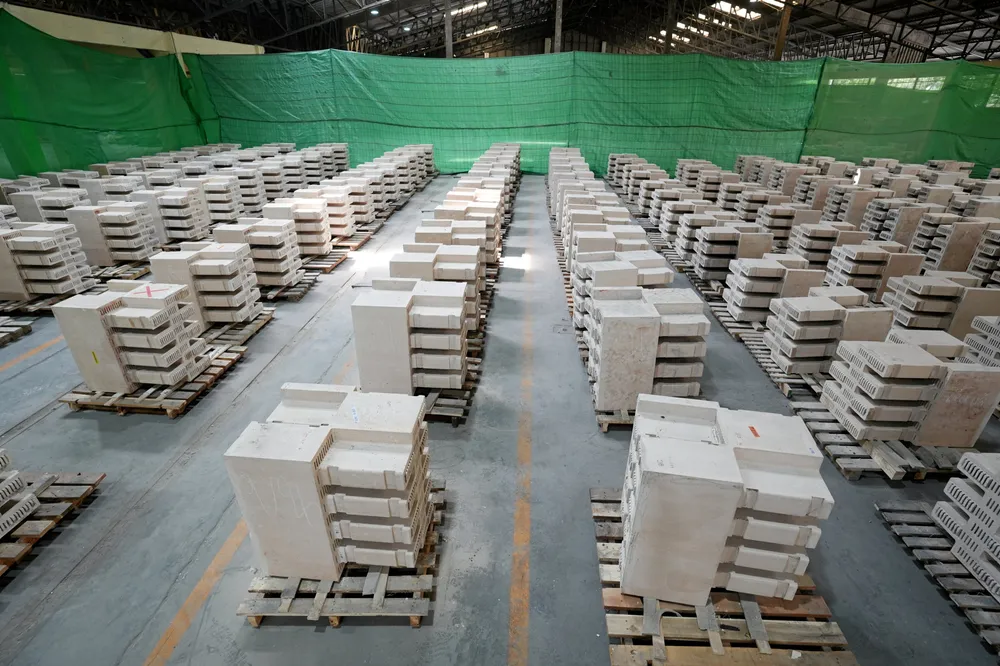New energy storage tech 'poised to outcompete' lithium-ion batteries: BNEF
Thermal and compressed air technology are already cheaper energy storage solutions than lithium-ion batteries, finds new analysis

Lithium-ion batteries are set to lose their leading market position in energy storage to newer technologies, some of which are already outcompeting them on price, according to a new BloombergNEF report.
The high energy density of lithium-ion batteries and their established supply chain have long cemented them – along with pumped hydro – as a market-leading energy storage technology.
Hitting that target is seen as necessary if another global target – tripling renewables capacity to 11TW by 2030 – is to be achieved, given the need to balance fluctuations in intermittent wind and solar power generation.
Long-duration energy storage (LDES), defined as being able to store energy for six hours or more, is "rapidly garnering interest worldwide as the day it will out-compete lithium-ion batteries in some markets approaches," said BNEF in its inaugural survey of costs in the sector.
While many LDES technologies are still “nascent and costly,” others are already cheaper than lithium-ion batteries, said BNEF.
Thermal energy storage and compressed air storage, for example, have an average capital expenditure of $232/kWh and $293/kWh, respectively. Lithium-ion batteries meanwhile came in at $304/kWh for four-hour duration systems.
Lithium-ion batteries typically struggle to hold energy much beyond eight hours, another factor that puts them at a disadvantage to LDES technologies that can often hold power for a day or more.
BNEF said LDES costs are, however, unlikely to fall as fast as those of lithium-ion batteries this decade. This is because lithium-ion batteries are extensively used in both the transport and power sectors, and this demand will drive down the cost of the technology.
LDES technologies also have a better chance of competing in non-Chinese markets due to the relatively high cost of lithium-ion batteries outside China, said BNEF.
China is also now leading the way in many of those alternative solutions, whether cheap compressed air energy storage, flow batteries or thermal energy storage, said BNEF.
The average capex in markets outside Chinese is 68% higher for compressed air storage, 66% higher for flow batteries and 54% higher for thermal energy storage, it said.
“The significant cost disparity is largely due to China’s far greater adoption of LDES technologies,” said Yiyi Zhou, a clean energy specialist at BNEF and co-author of the report.
“While other nations are still in the early stages of commercializing LDES technologies, China is already developing gigawatt-hour scale projects, driven by favourable policies.”
Evelina Stoikou, a BNEF energy storage expert, said that while costs for LDES technologies outside of China are higher, "the US and Europe have a chance to invest in their own industries and drive innovation and deployment.”
Interest in those regions has been driven by ambitious clean energy targets, higher lithium-ion battery costs and an effort to develop alternative technologies that do not rely on lithium, said Stoikou.
"It’s clear LDES technologies have entered into a virtuous cycle where growing market adoption is spurring increasing innovation and cost efficiencies."
"As recognition grows on the multiple value streams of LDES technologies and how they deliver to energy grids, industrial processes, and support global sustainability targets, we expect to see these trend lines continue and accelerate.”
John O'Donnell, CEO of California start-up Rondo Energy, which has developed a system to store energy in superhot bricks, claims that thermal batteries are "moving faster to much lower cost than other systems – below $50/MWh in the near future."